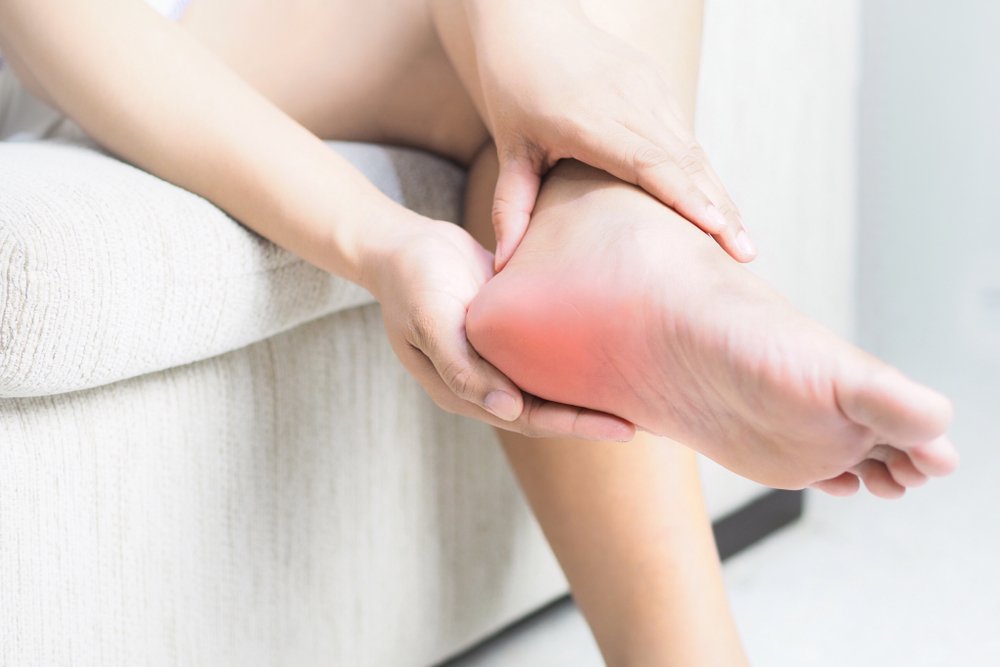 Heel pain can be a troublesome and debilitating condition that affects people of all ages and lifestyles. Whether you're an avid runner, spend long hours on your feet at work, or simply enjoy a stroll in the park, heel pain can strike unexpectedly, impacting your daily activities. In this post, we'll delve into the various causes of heel pain, offering insights into potential solutions.
Heel pain can be a troublesome and debilitating condition that affects people of all ages and lifestyles. Whether you're an avid runner, spend long hours on your feet at work, or simply enjoy a stroll in the park, heel pain can strike unexpectedly, impacting your daily activities. In this post, we'll delve into the various causes of heel pain, offering insights into potential solutions.
- Plantar Fasciitis: The Arch Enemy of Comfort:
- One of the most common causes of heel pain is plantar fasciitis, a condition characterized by inflammation the thick band of tissue that connects the heel bone to the toes.
- Contributing factors may include excessive strain on the feet, improper footwear, high-impact activities, or issues with foot mechanics.
- Achilles Tendinitis: A Culprit at the Back of the Heel:
- The Achilles tendon, located at the back of the heel, can become inflamed due to overuse or excessive strain. This condition is known as Achilles tendinitis.
- Runners and athletes engaging in activities that involve sudden bursts of movement are particularly susceptible to this type of heel pain.
- Heel Spurs: Bony Protrusions and Their Impact:
- Heel spurs are bony growths that develop on the underside of the heel bone. While not always painful themselves, they can contribute to discomfort by irritating surrounding tissues.
- Factors like poor biomechanics, obesity, or wearing poorly-fitted shoes can contribute to the development of heel spurs.
- Bursitis: Cushioning Woes in the Heel:
- Bursae are small, fluid-filled sacs that cushion and reduce friction between bones, tendons, and muscles. In the heel, inflammation of these sacs can lead to bursitis.
- Repetitive activities or poorly fitting shoes can cause irritation and inflammation of the bursae, resulting in heel pain.
- Inflammatory Arthritis: A Systemic Culprit:
- Conditions like rheumatoid arthritis or ankylosing spondylitis can cause inflammation in multiple joints, including the heel.
- Inflammatory arthritis can result in persistent heel pain, often accompanied by stiffness and swelling.
- Tarsal Tunnel Syndrome: Nerve Compression at the Heel:
- Similar to carpal tunnel syndrome in the wrist, tarsal tunnel syndrome involves compression of the posterior tibial nerve in the ankle, leading to heel pain.
- Causes may include injury, inflammation, or other conditions that result in compression of the nerve.
Solutions and Relief:
- Rest and Ice:
For many causes of heel pain, rest and applying ice can help alleviate inflammation and provide relief.
- Proper Footwear:
Wearing shoes that provide proper support and cushioning is crucial for preventing and managing heel pain.
- Stretching Exercises:
Regular stretching exercises for the calf muscles and the plantar fascia can improve flexibility and reduce strain on the heel.
- Orthotic Inserts:
Custom or over-the-counter orthotic inserts can provide additional support and correct foot mechanics, addressing the root causes of heel pain.
- Medical Intervention:
In more severe cases, medical interventions such as physical therapy, corticosteroid injections, or surgical procedures may be recommended.
Conclusion:
Understanding the causes of heel pain is the first step towards finding effective solutions and regaining comfort in your daily activities. Whether you're dealing with the common plantar fasciitis or facing challenges from inflammatory arthritis, a comprehensive approach that combines lifestyle adjustments, proper footwear, and, if necessary, medical guidance can pave the way to a pain-free future for your heels.

